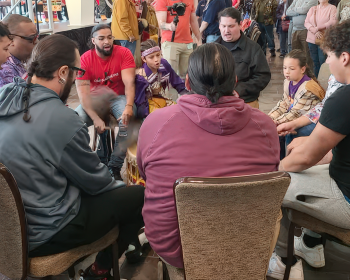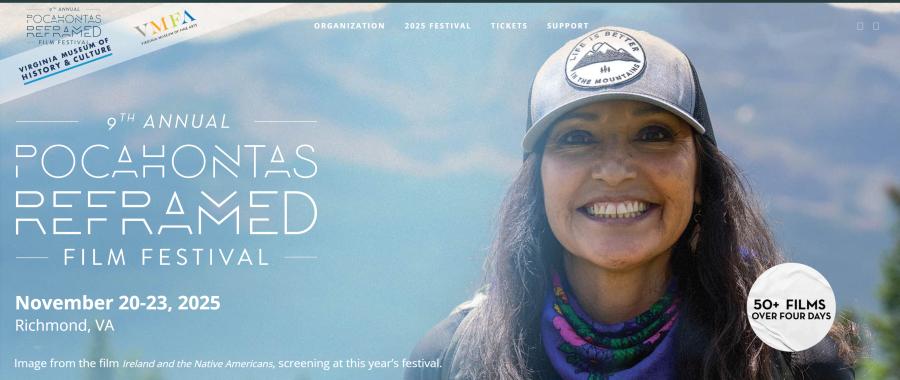on "cultural survival"
In a recent issue of Civilization, a publication of the U.S. National Library, Harvard philosophy professor Michael Blake objects to the expression "cultural survival" because he understands its usage as being something close to a moral absolute: promotion of an endangered traditional people s way of life is to somehow endorse their membership in the ever-growing and conformist monoculture or even their extinction. This is a false dichotomy. Blake works under the misguided impression that to support the concept of cultural survival is to fight to ensure that indigenous groups remain frozen in time as with programs that ensure the survival of an endangered species of bird in its unique habitat -- and he sees no possible justification for this. Natural species come and go, as have various cultures over the millennia. Promote the lives of people as individuals, he argues, and not their worthless cultures.
Blake rightly states that emphasis should be directed to the causes of the dispossession, marginalization, and premature deaths of so many of the world's indigenous peoples, but he fails to appreciate the importance of culture in ultimately addressing these problems. In giving voice to this view, Blake links himself with a growing clique of academics and environmentalists who claim to speak with the interests of indigenous peoples at heart, as if they intimately understand their struggles and know what is best for them. In his latest book, The Culture Club, for instance, University of Sydney anthropologist Roger Sandall argues that federal policies of self-management for Aborigines in Canada and Australia and the Maori of New Zealand have not advanced their cause. On the contrary, he says, they have crippled indigenous groups: education levels are down, health standards are dropping, and unemployment and imprisonment are on the rise. He places the blame not on the program designers or the indigenous people, but on civilization's malcontents who live in a bohemian fantasy world in which everything indigenous is desirable and all else is not -- not even the very real progress made in the technological realm and in cross-cultural understanding over the past 200 years. Such an outlook, Sandall argues, when foisted on indigenous peoples, has led many to the mistaken belief that their cultures are worth preserving.
As an organization, Cultural Survival promotes the rights, voices, and visions of indigenous peoples; i.e., their right of self-determination: to chart their own futures on their own lands. We do not seek to answer the question of why some cultures appear to persist and others falter along the way. All Cultures are constantly in flux. Armenian American culture bears little resemblance to Armenian culture of old or even to that of modern day Armenia and yet Armenian Americans identify as Armenian. In terms of indigenous peoples, we know that if the rampant forces of development go unchecked, soon indigenous peoples would be dispossessed of their land, their environments and communities would be destroyed, and remnant populations would be forced to live on the margins of the "civilized" world with assimilation into the mainstream their sole viable option for the future. As indigenous people such as Colombia's U'wa have made abundantly clear in the media, it is their affiliation with a group and that group's sacred attachment to land that is the basis of their identity -- not their membership in the fictitious social category Homo Individualis. The U'wa are fighting not only for their territorial integrity but also for the social integrity and collective rights of their group.
Culture is what gives meaning to people's lives. Human beings do not live in the world, but in a world: a specific and dynamic cultural world not only rich with meaning but of vital importance as the context in which people make sense of who they are and how to live their lives. Individuals orient themselves toward each other, toward the world, and toward the cosmos in terms of the understandings they share with others who live by their culture. If a given population wishes its culture to survive, then its own responsibility is to do what is necessary to maintain and cultivate it, reordering priorities in accordance with the will of the group. This they will do unless they are forced to abandon it. The surrounding society, or the rest of the world for that matter, is not responsible for preserving or protecting that culture. But it is responsible for protecting the rights of the marginal or minority population in such a way that its culture can be maintained.
We reject the notion that cultural change is tantamount to genocide, just as we reject the idea that cultures can or should be frozen at some given point in time. The danger we face in the modern world is not so much that dying cultures are being inappropriately resuscitated (as Blake and Sandall appear to believe), but that vibrant cultures are being forced out of existence. Denying people the right to participate fully in organizing and cultivating the processes that constitute their cultural world produces extreme forms of disorientation and disruption. It is our moral responsibility to live and let live. So let us continue to use the expression cultural survival, but be aware that the term is sometimes likely to be misunderstood and misused, even in unexpected quarters.
The indigenous struggle for land rights and autonomy has been long and bitter. In this issue of the Cultural Survival Quarterly we present two sets of essays on the theme of cultural survival: visions of indigenous sovereignty by indigenous scholars, and a guest-edited section on perhaps the most significant threat to cultural survival mining on indigenous lands.
The first installment of papers from our May 2000 indigenous sovereignty conference at Harvard University's Weatherhead Center for International Affairs, entitled "Indigenous/Tribal Societies and Pluri-Ethnic States," includes papers from Meitamei Olol-Dapash of Kenya, Darren Godwell of Australia, ana Kristyna Bishop of First Peoples Worldwide. In the pursuit of indigenous sovereignty, they emphasize the need for the recognition of a people's right to self-determination on their traditional lands and for respect for traditional cultures, but also express a desire to build partnerships and relationships of reciprocity with others on mutually beneficial terms.
Often the most vociferous opponent of indigenous rights has been the international mining lobby; this issue examines the impact of mining as it pertains to cultural survival, whether indigenous peoples are engaged in mineral extraction themselves, in partnership with mining companies, or subjected to the unwelcome advance of developers.
The Yolngu (Aborigines) of northern Australia tell a powerful story about the meaning of land -- one shared by many indigenous peoples. It helps to explain why mining is such a sensitive topic. In the Yolngu languages, each part of the body corresponds to a feature of the land or seascape. The esophagus (mayang) is a river; the back (diltji), open plains country; the stomach (golon), a fresh water swamp; the hairs on one's head are the trees that protect the sacred lands (the eyes, nose, ears, and mouth). Bone, inherited from the father, is rock. Blood, inherited from the mother, is to the body what fresh water is to the land. This body-land metaphor is culturally prescribed. From this reference point, often so difficult for non-Aborigines to appreciate, one can understand the caution Yolngu exercise when considering the potential impacts of development projects. People are not distinct from the land. They are an integral part of it (see "The Wangurri Garden Project," page 70).
In the past decade, multinational corporations began a review of their policies regarding indigenous peoples. Under pressure from human rights groups, new codes of best-practice are slowly being adopted. In January, 2001, for example, a number of companies (including BP and Shell), backed by the U.S. and British governments and human rights organizations, agreed to voluntary guidelines for respecting the human rights of impacted populations in their areas of operation. These guidelines mainly deal with the conduct of private security forces hired by the companies or the ways in which the companies cooperate with local law enforcement agencies in troubled nations such as Angola, Cameroon, Chad, Colombia, Ecuador, Equatorial Guinea, Indonesia, and Nigeria. For the past several years, Harvard University's Program on Non-Violent Sanctions and Cultural Survival has worked toward the realization of such emerging global standards for strengthening human rights safeguards in the energy sector. While the emphasis has been on ensuring that oil companies in South America abide by standards established in international covenants (such as ILO 169) regarding consultation with, and participation of, indigenous peoples, these agreed-upon voluntary guidelines represent an important first step in respecting the rights of traditional land owners and in furthering the cultural survival of indigenous peoples.
Reference & futher reading
Blake, M. (2000 September). Rights for People, Not for Culture. Civilization.
McIntosh, I.S. (2000). Aboriginal Reconciliation and the Dreaming. Boston: Allyn and Bacon.
Sandall, R. (2000). The Culture Club: Disigner Tribalism and Other Essays. Colorado: Westview.
Article copyright Cultural Survival, Inc.



